Mexico City is an old city. Not in terms of people, as they’re quite young. As of 2020, 24% of CDMX inhabitants were between the ages of 24 and 35. Neither is it very old in terms of its own age. According to The Economist, the urban sprawl increased 128% between 1990 and 2014. After 1970, its count of four core delegations swelled to 16, meaning a sizable chunk of Mexico City has been newly acquired.
Still, the heart of Mexico’s vibrant capital is an ancient one, full of stories and legends, tradition and lore. And if the city wasn’t already fascinating enough, here’s another nugget to add to the list: it’s home to the oldest street in the Americas.
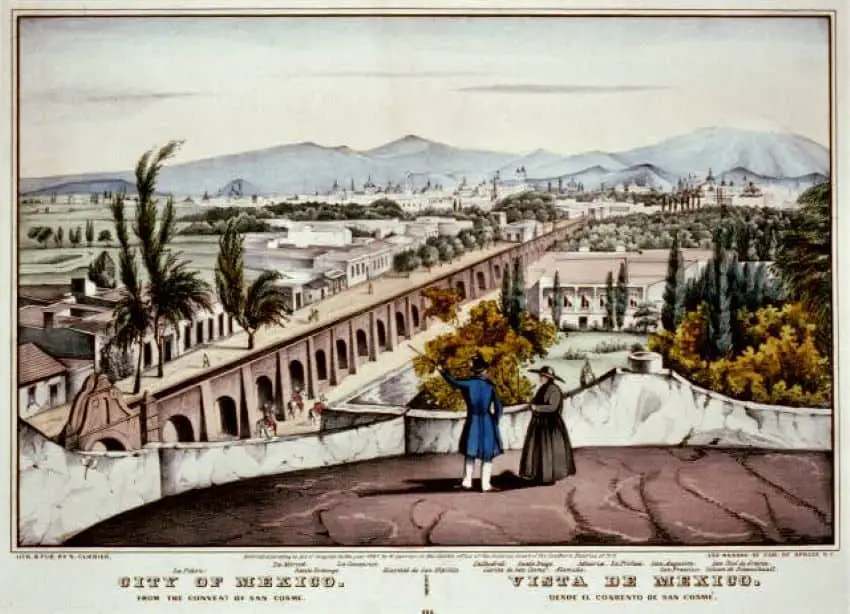
A statistic I find rather mind blowing, since it’s ranked against the likes of the Dominican Republic, Cuba, Uruguay and Brazil. But it’s true:there is no documented street still in use in the Americas that competes with the one in Mexico City.
Of the Americas’ oldest roads, Calle Tacuba has outlived them all.
If you’ve been to the lovely and energetic Historic Center, you’ve probably walked along its crooked sidewalks, dodging perfume salesmen and falling for the charms of pretty restaurant hostesses. You may even have made it to the far end in Miguel Hidalgo, where the street is known by a different name, and its borders brush up against the flower-filled cemeteries of Mexico City’s oldest international communities. No matter which of its five sections you’ve roamed, you’re bound to have encountered various forms of architecture, people, food and loads of traffic, both auto and foot.
Let’s start at the start, as they say. It was in 1325 that construction of the Mexica’s glittering empire, a floating paradise in the middle of Lake Texcoco, began. The city flourished quickly, spreading outward from the islands and requiring connections with dry land . Workers broke ground, as it were, on several causeways and dikes which did more than just link the capital to the mainland — they separated salt water from freshwater, supporting an extensive local farming system known as chinampas.
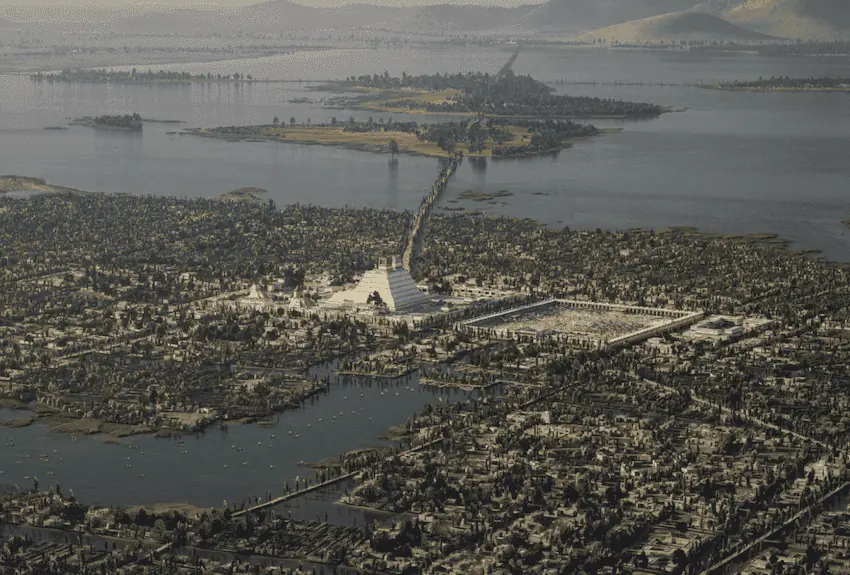
Between 1377 and 1389, the principal causeway was constructed, connecting Tenochtitlan with the neighboring city-state of Tlacopan, its partner in the Triple Alliance. The Mexica would surely have been proud to know that this very road they were building would survive invasions, earthquakes, floods and revolutions and become a gathering place for art lovers and architecture buffs, street vendors and pan dulce addicts, like myself.
Depending on your location, the Tlacopan causeway is now called one of the following:
- Calle Tacuba (Historic Center)
- Avenida Hidalgo (Historic Center)
- Puente de Alvarado, now México-Tenochtitlán (Buenavista)
- Ribera de San Cosme (Santa María la Ribera)
- México-Tacuba (Tacuba)
The 8 kilometer (approximately 5 mile) road stretches westward from the bustling Zócalo to the Panteón Británica in Tacuba. In theory, you could walk its full length, immersing yourself in a fraction of the infinite lifestyles one can find in Mexico’s eclectic capital. What’s more, you can take a little stroll through history, making sure to stop at these must-see landmarks along the way.
Palacio de Minería
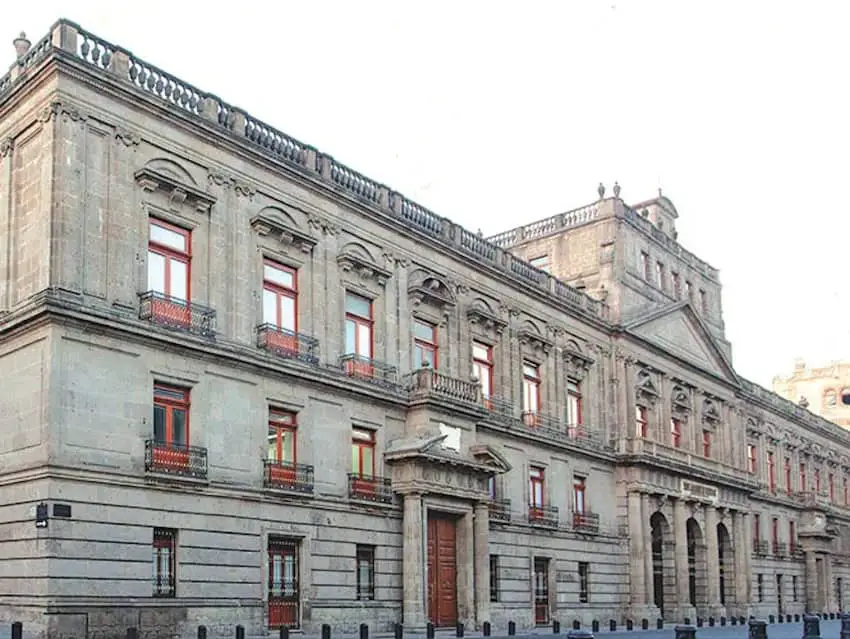
Calle Tacuba 5, Centro Histórico
Originally built under architect Manuel Tolsá between 1797 and 1813 to house the Royal Mining School, the Palace of Mines is a cultural center and museum dedicated to the architect himself. Many visitors go just to admire its astounding Neoclassical architecture, and guided tours take place on weekends at 11:00 am and 1:00 pm.
Museo Nacional de Arte (MUNAL)
Calle Tacuba 8, Centro Histórico
Mexico’s National Museum of Art showcases an extensive collection of Mexican art from the 16th century to the present. The building is a neoclassical masterpiece in itself, often serving as a cultural hub for exhibitions and educational programs.
Restaurante El Cardenal
Calle Marconi 2, Centro Histórico
The popular Mexican restaurant housed in the former offices of the capital’s electrical company is a regular favorite for locals and tourists. And with a location adjacent to MUNAL, it makes for a perfect museum-and-lunch pairing.
Museo del Perfume (MUPE)
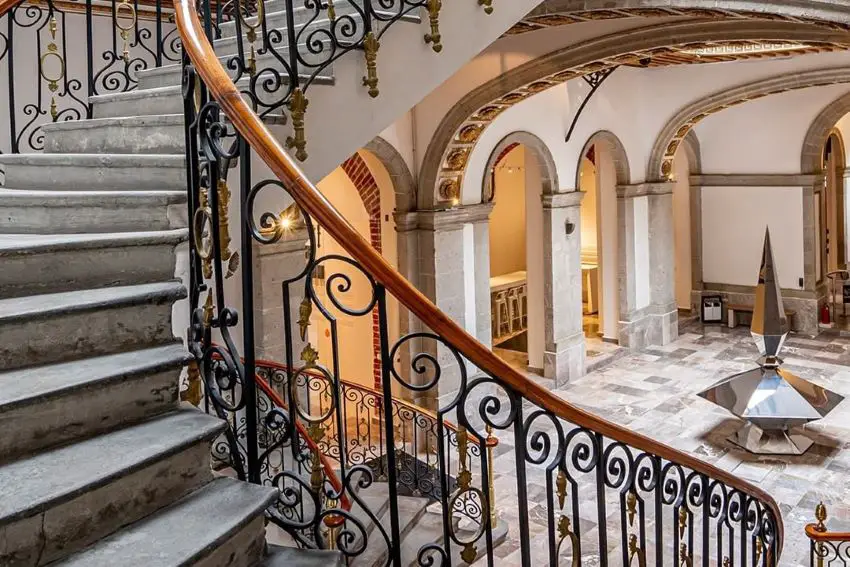
Calle Tacuba 14, Centro Histórico
This quirky museum is dedicated to all things fragrance. From the history of perfume to common ingredients to a display of vintage bottles, what most stands out about the Perfume Museum is its incredible interior architecture.
Café Tacuba
Calle Tacuba28, Centro Histórico
Is the food outstanding? Eh. Is the service top notch? Ehhh. Does it matter? Definitely not. Don’t think twice about waiting in line for a table at this historic café, which has been serving traditional Mexican cuisine since 1912. Its charming atmosphere makes it a beloved spot for both locals and visitors seeking authentic flavors.
Palacio de Correos de México
Calle Tacuba 1, Centro Histórico
Yet another palatial gem sitting pretty on Calle Tacuba, Mexico City’s most famous post office is blessed with a spectacular interior adorned with murals and intricate carvings.
Palacio de Bellas Artes
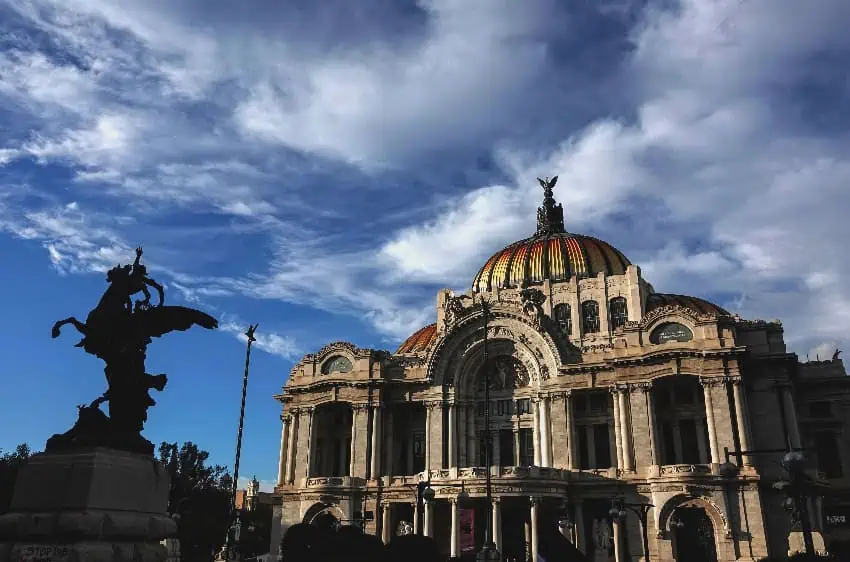
Avenida Juárez, Centro Histórico
After defying the disastrous effects of soft soil and the rowdy Mexican Revolution, CDMX’s iconic Fine Arts Museum still stands tall and proud on the edge of the Alameda Central. In addition to original pieces by Diego Rivera and Rufino Tamayo, there is a beautiful theater that regularly hosts opera and ballet concerts.
Panadería La Vasconia
Calle Tacuba 73, Centro Histórico
The oldest bakery in the city is nestled right here on Calle Tacuba and has been serving up traditional pan dulce and other sweet treats since 1870.
Iglesia de San Hipólito
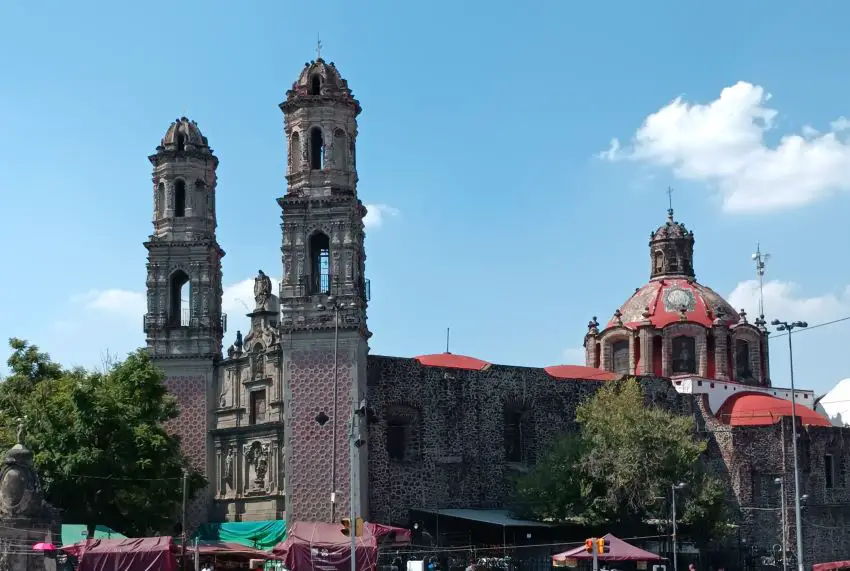
Zarco 12, Guerrero
This is way more than a magnificent church. Formerly known as Puente de Alvarado, the area was once a defensive moat protecting Tenochtitlan. It was here that Spanish soldiers, fleeing Tenochtitlan in 1520 under the command of Hernán Cortés, drowned under the weight of the gold they were attempting to salvage. The temple that stands today was started in 1599 and completed in 1740.
Museo de San Carlos
Avenida México-Tenochtitlán 50, Tabacalera
First off, any museum situated in a former palace is worth a visit. Moreover, its impressive collection of European art features renowned artists such as Francisco de Goya and Peter Paul Rubens.
Temple of Saints Cosme and Damian
Serapio Rendon 5, San Rafael
Once upon a time, there was a little pueblo here called San Cosme. It is believed to have originated in 1524 when Hernán Cortés allocated land for orchards and farms. Over the years, a chapel and hospital were built, and in 1672 so were these striking, gold-laden temples.
Mercado de San Cosme
Calle Gabino Barreda 18, San Rafael
Positively overflowing with everything from mangos to mazapan, those looking for a truly local shopping experience cannot walk by this market without ducking in for a minute or 60. Shopping with kids? Drop them off at the onsite daycare center and buy with abandon.
FARO Cosmos

Calzada México-Tacuba, Tlaxpana
While I invite you to stick around for a show, the real purpose of the stop at FARO Cosmos is the space in which it resides. The historic theater was previously known as the Cine Cosmos, especially famous during the Golden Age of Mexican cinema. Inside is a monument dedicated to the student movement of 1971, having served as a shelter for students and protestors during repression by the police and military.
Heroico Colegio Military
Avenida México-Tacuba Campo Militar 1-B, Popotla
The dramatic, sprawling campus no longer serves as a military academy, but rather as a military-run museum. Today, visitors can peruse weapons, riding equipment and portraits of famous generals that date back to the Mexican Revolution.
Capilla Merced de las Huertas
Calzada México-Tacuba 305, Miguel Hidalgo
The tempered blue-and-white facade doesn’t fully convey the warmth inside this 17th-century church. Historically, it’s regarded as the home of a wooden statue of the Virgin of Tacuba (dating from 1762) which was stolen in 2005. Damaged during the heist, the statue was recovered and guarded by the courts until its careful restoration in 2012. She now sits comfortably in her original abode.
Tree of the Victorious Night
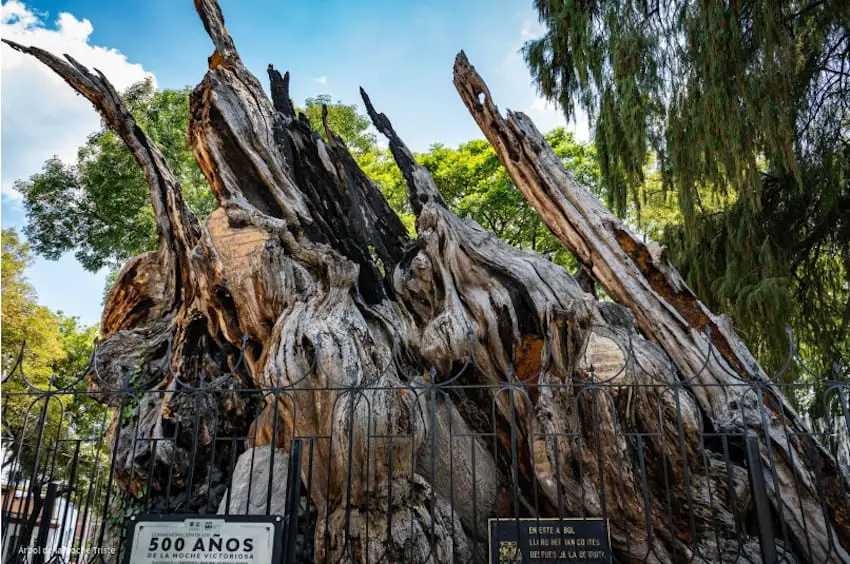
Calz México-Tacuba 453, Popotla
On June 30, 1520, the Spanish conquistadors and Indigenous allies led by Hernán Cortés fled Tenochtitlán over the Tlacopan causeway, taking heavy losses. The defeat had a profound emotional effect on the conquistador. So much so that, according to legend, he sat down at an immense, twisted cypress tree on the causeway, put his head in his hands and cried.
For generations, the event was referred to as La Noche Triste (the Night of Sorrows), with the tree named accordingly, but in 2020 the government renamed the event as the Victorious Night. The tree Cortés supposedly wept under still is still standing, and while it has clearly seen better days, there’s an undeniable energy that exudes.
Popotla
This little hidden gem of a neighborhood is a surprising mix of Porfiriato-era mansions and colorful facades, breezy parks and functional architecture. If you are a fan of authentic, handmade tortillas, and my guess is that you are, don’t forgo a stop at Tortillas a mano La Reyna on Calle Mediterráneo.
International cemeteries
Lago Saima 78, Huichapan
Technically the culmination of America’s longest street, the British Cemetery opened in 1824 and operated under British administration until it ran out of space — that is not a joke. You can still visit the British Chapel which is now part of the Juan Ruíz de Alarcón cultural center. Within walking distance are the American, German, and Spanish cemeteries, where you can find the tomb of the beloved Mexican actor Mario Moreno, better known as Cantinflas.
Bethany Platanella is a travel planner and lifestyle writer based in Mexico City. She lives for the dopamine hit that comes directly after booking a plane ticket, exploring local markets, practicing yoga and munching on fresh tortillas. Sign up to receive her Sunday Love Letters to your inbox, peruse her blog, or follow her on Instagram.
